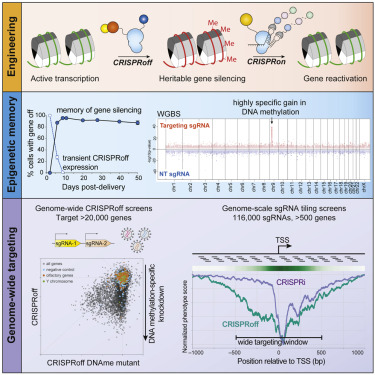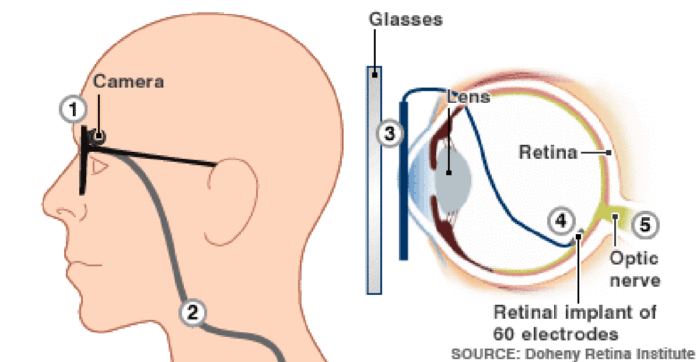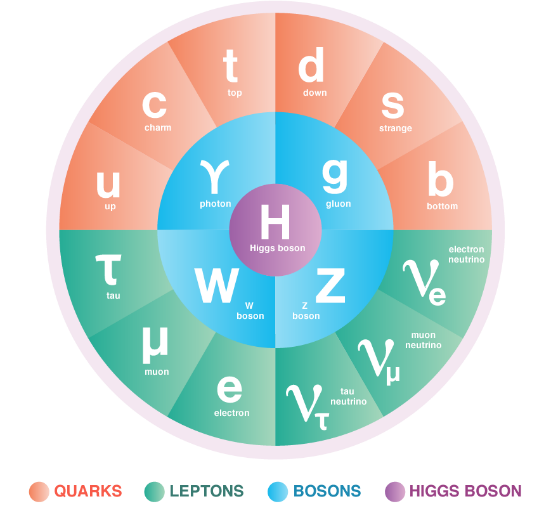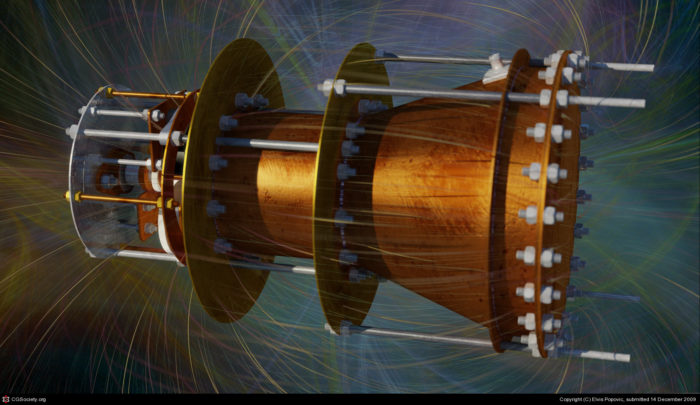Apr
13
2021
 Our knowledge of genetics and the tools to engineer or modify genetics continues to rapidly progress. The most celebrated recent advance was CRISPR (clustered regularly interspaced short palindromic repeats), a bacteria-derived system that can easily target any sequence of DNA using a guide RNA. CRISPR is like the targeting system and it can be paired with various payloads, most commonly Cas9, which is an enzyme that will cut both strands of DNA at the desired location. CRISPR was actually discovered in 1993, but the CRISPR-Cas9 system was first used for gene editing in 2013, an advance that won the Nobel prize in chemistry in 2020.
Our knowledge of genetics and the tools to engineer or modify genetics continues to rapidly progress. The most celebrated recent advance was CRISPR (clustered regularly interspaced short palindromic repeats), a bacteria-derived system that can easily target any sequence of DNA using a guide RNA. CRISPR is like the targeting system and it can be paired with various payloads, most commonly Cas9, which is an enzyme that will cut both strands of DNA at the desired location. CRISPR was actually discovered in 1993, but the CRISPR-Cas9 system was first used for gene editing in 2013, an advance that won the Nobel prize in chemistry in 2020.
We are still, however, on the steep part of the learning curve with this powerful technology, and now researchers have published perhaps the greatest advance since 2013 – a way to use CRISPR as an on-off switch for genes. At the very least this will revolutionize genetic research. But it also has incredibly therapeutic potential, although other hurdles remain for applications in living organisms.
Using CRISPR-Cas9 for gene editing basically comes in two forms, knocking in genes or knocking out genes. Knocking out genes is by far the easier of the two. CRISPR targets the gene you want to silence, or knock out, and Cas9 will make a double strand cut in the DNA. The cells natural repair mechanism, called non-homologous end joining (NHEJ), the joins to the two cut ends together. This repair mechanism, however, is very imprecise and frequently introduces errors. Many of those errors will cause a shift in the genetic sequence that essentially ruins to code, effectively turning off the gene. This change is permanent, and will be carried to all later generations.
Knocking in a gene is more difficult. You not only have to make the cut at the desired location, you have to provide the genes sequence you want inserted and you need a different DNA repair mechanism called homology-directed repair (HDR), which is more precise and preserves the genetic sequence so that the gene remains active. But NHEJ is much more common than HDR, and so the trick is finding ways to enhance HDR repair so that a new gene can be successfully inserted at the repair site.
Continue Reading »
Apr
12
2021
 Some terms created for science fiction eventually are adopted when the technology they anticipate comes to pass. In this case, we can thank The Six Million Dollar Man for popularizing the term “bionic” which was originally coined by Jack E. Steele in August 1958. The term is a portmanteau of biological and electronic, plus it just sounds cools and does roll off the tongue, so it’s a keeper. So while there are more technical terms for an artificial electronic eye, such as “biomimetic”, the press has almost entirely used the term “bionic”.
Some terms created for science fiction eventually are adopted when the technology they anticipate comes to pass. In this case, we can thank The Six Million Dollar Man for popularizing the term “bionic” which was originally coined by Jack E. Steele in August 1958. The term is a portmanteau of biological and electronic, plus it just sounds cools and does roll off the tongue, so it’s a keeper. So while there are more technical terms for an artificial electronic eye, such as “biomimetic”, the press has almost entirely used the term “bionic”.
The current state of the art is nowhere near Geordi’s visor from Star Trek TNG. In terms of approved devices actually in use, we have the Argus II, which is a device that include an external camera mounted on glasses and connected to a processor. These send information to a retinal implant that connects to ganglion cells which send the signals to the brain. In a healthy eye the light-sensing cells in the retina will connect to the ganglion cells, but there are many conditions that prevent this and cause blindness. The photoreceptors my degenerate, for example, or corneal damage does not allow light to get to the photoreceptors. As long as there are surviving ganglion cells this device can work.
Currently the Argus II contains 60 pixels (6 columns of 10) in black and white. This is incredibly low resolution, but it can be far better than nothing at all. For those with complete blindness, being able to sense light and shapes can greatly enhance the ability to interact with the environment. They would still need to use their normal assistive device while walking (cane, guide dog or human), but would help them identify items in their environment, such as a door. Now that this device is approved and it functions, incremental improvements should come steadily. One firmware update allows for the perception of color, which is not directly senses but inferred from the pattern of signals.
Continue Reading »
Apr
09
2021
 It’s all about money, and infrastructure. We can talk about what’s best for the environment, but when it comes to individual purchasing decisions, the decisive factors are going to be expense and functionality – how much bang do you get for the buck. This is especially true when it comes to industry. Things like fashion and trendiness don’t really matter on the factory floor, only efficiency, ROI, cost effectiveness.
It’s all about money, and infrastructure. We can talk about what’s best for the environment, but when it comes to individual purchasing decisions, the decisive factors are going to be expense and functionality – how much bang do you get for the buck. This is especially true when it comes to industry. Things like fashion and trendiness don’t really matter on the factory floor, only efficiency, ROI, cost effectiveness.
In our conversion to a green economy, the low carbon options have to be cost effective if we want wide adoption (short of mandates). For electric cars, we are already there. According to the Natural Resources Defense Council:
Over the anticipated 15-year life span of a vehicle, the electricity required to run a battery-powered electric car can be as much as $14,480 cheaper than fueling up an internal combustion vehicle.
That, however, is the best case depending on electricity and gasoline costs. In areas with the highest electricity costs and lowest gasoline prices there can be a small advantage to gas. But there is an overall cost advantage to electric cars. Also, according to Consumer Reports:
Consumers who purchase an electric car can expect to save an average of $4,600 in repair and maintenance costs over the life of the vehicle compared with a gasoline-powered car, CR’s study shows.
A 2018 study combines these factors and takes average value and concludes:
The average cost to operate an EV in the United States is $485 per year, while the average for a gasoline-powered vehicle is $1,117.
Continue Reading »
Apr
08
2021
 Physicists are all verklempt. Prof Ben Allanach, from Cambridge University said:
Physicists are all verklempt. Prof Ben Allanach, from Cambridge University said:
“This is the moment that I have been waiting for and I’m not getting a lot of sleep because I’m too excited.”
What could have scientists so excited? A muon that wobbled a little faster than it’s supposed to. In an experiment at the Fermi National Accelerator Laboratory (Fermilab) in Batavia, Illinois (the Muon g-2 experiment), physicists accelerated the subatomic particle muons and exposed them to a magnetic field. Muons are like electrons but 200 times heavier. They have a charge so should respond to a magnetic field by wobbling as they swing around the accelerator, and they did, but they did it a little faster than the standard model predicts they should. It was as if a force not contained within the standard model was acting on them. This experiment adds to another in Japan and yet another at the LHC also hinting at new physics. The statistical power of the Fermi results is at 4.1 sigma, or a 1 in 40,000 probability of being by chance alone. Five sigma (one chance in 3.5 million) is the threshold when the physics community accepts a claim as proven.
This is a big deal, perhaps even bigger than when the LHC confirmed the existence of the Higgs boson. That confirmed a prediction of the standard model, which is nice, but does not point the way to new physics. What physicists desperately want to do is break the standard model, to find some provable phenomenon that violates the standard model, which should lead to the discovery of a new particle or perhaps even a new force outside the current model. This is what would create the next great discovery in physics and perhaps solve some enduring mysteries, like what the hell is responsible for the acceleration of the expansion of the universe?
Continue Reading »
Apr
05
2021
 The deep history of the Earth is fascinating, and while we have learned much about the distant past there are still many puzzle pieces missing. A new study tweaks our understanding of one of the biggest events in Earth’s history – the Great Oxygenation Event, and also helps better align the other big events in the past.
The deep history of the Earth is fascinating, and while we have learned much about the distant past there are still many puzzle pieces missing. A new study tweaks our understanding of one of the biggest events in Earth’s history – the Great Oxygenation Event, and also helps better align the other big events in the past.
The Earth as we know it formed about 4.5 billion years ago. Earth is actually Earth 2.0 – the proto-Earth was hit by a Mars-sized object, forming both the current Earth and the Moon. The Earth was fairly molten at this time, still hot from all the impacts, but over the next millions of years the surface cooled, stable pools of liquid water formed on the surface, and it had a stable atmosphere of mostly nitrogen. In this environment life evolved. We are not exactly sure when, but probably by 3.5 billion years ago. There is good evidence for cyanobacteria by 2.9 billion years ago. These critters are important, because they make food from sunlight and produce oxygen as a waste byproduct. For millions of years oceans full of cyanobacteria cranked out oxygen, which built up in the atmosphere.
This is where the new study comes in – it explores exactly when oxygen built up to high levels. The current atmosphere is about 78% nitrogen, 21% oxygen, 0.04% carbon dioxide, and trace amounts of methane and other gases. Prior to about 2.45 billion years ago there was essentially zero oxygen in the atmosphere. Between 2.45 and 1.85 billion years ago oxygen built up slowly in the atmosphere, up to 3-5%, but was also mostly absorbed by the oceans and seabed rock. This is the Great Oxygenation Event, still little oxygen by today’s standard, but enough to usher in a major change in the chemistry of earth. From 1.85 to 0.85 billion years ago oxygen had saturated the ocean and so now spread to the land where it was further absorbed into rocks and minerals. During this time atmospheric O2 levels were pretty stable at 3-5%. But then, starting 0.85 billion years ago the surface of the Earth had absorbed all the oxygen it could (the oxygen sinks were full) and so O2 started building up in the atmosphere significantly, peaking about 400 million years ago at over 30% and then settling down to the current 21%. Oxygen levels are now slowly and steadily decreasing.
Continue Reading »
Apr
01
2021
 There are many times as a skeptic that I wish I were wrong. I really want to detect an alien artifact, and would love free energy, cold fusion, and a cure for cancer. I completely understand why these ideas have endless allure and the temptation to engage in a small bit of motivated reasoning to see the science from a particular, if odd, angle. But science does not progress this way. It progresses through the cold and heartless removal of error, by brutally smashing the pillars of our own vanity, fear, and desires, and by controlling for our own biases and shortcomings. I often refer to the peer-review process as a meat-grinder – it chews up and spits out ideas, but there is a product at the end – and that goes right back into the meat-grinder for another round.
There are many times as a skeptic that I wish I were wrong. I really want to detect an alien artifact, and would love free energy, cold fusion, and a cure for cancer. I completely understand why these ideas have endless allure and the temptation to engage in a small bit of motivated reasoning to see the science from a particular, if odd, angle. But science does not progress this way. It progresses through the cold and heartless removal of error, by brutally smashing the pillars of our own vanity, fear, and desires, and by controlling for our own biases and shortcomings. I often refer to the peer-review process as a meat-grinder – it chews up and spits out ideas, but there is a product at the end – and that goes right back into the meat-grinder for another round.
One more really tempting idea now bites the dust – the EM Drive. I first wrote about this almost seven years ago. The idea is to create propellantless propulsion. This would revolutionize space travel, and could potentially even create that flying car we always wanted. Now, in the world of physics, in order to accelerate something there needs to be a force acting on it. If you want a rocket to go up, then you need to throw some mass from the rocket down so that the mass and velocities match (equal and opposite). So rockets need propellant, something to throw out their back. Ideally this is something very light that gets accelerated to really high speeds to produce the maximal thrust to the rocket.
While this concept works just fine, it is also extremely limiting, by something known as the rocket equation. The rocket needs to carry enough fuel to accelerate the entire rocket, including all the fuel it is carrying. So it needs fuel to carry the fuel to carry the fuel… This means there is a geometric rather than linear relationship between speed and range and how big a rocket and its fuel has to be. For many chemical rockets the fuel is the propellant; when you ignite it the fuel rapidly heats and expands and gets pushed out the exhaust. Other rocket designs may have a separate energy source and propellant. Ion drives, for example, create energy to power magnets which accelerate charged particles to extreme velocities.
But what if you did not need propellant? What if all you needed was energy, and could somehow use that energy to create thrust without having to throw any matter out the back end? That would drastically alter the rocket equation. This would reduce the cost of space travel and open up the solar system. It might even make it practical to get to nearby stars – in a hundred years we might have a fusion powered ship that can zip around the galaxy at a constant 1G acceleration.
Continue Reading »
 Our knowledge of genetics and the tools to engineer or modify genetics continues to rapidly progress. The most celebrated recent advance was CRISPR (clustered regularly interspaced short palindromic repeats), a bacteria-derived system that can easily target any sequence of DNA using a guide RNA. CRISPR is like the targeting system and it can be paired with various payloads, most commonly Cas9, which is an enzyme that will cut both strands of DNA at the desired location. CRISPR was actually discovered in 1993, but the CRISPR-Cas9 system was first used for gene editing in 2013, an advance that won the Nobel prize in chemistry in 2020.
Our knowledge of genetics and the tools to engineer or modify genetics continues to rapidly progress. The most celebrated recent advance was CRISPR (clustered regularly interspaced short palindromic repeats), a bacteria-derived system that can easily target any sequence of DNA using a guide RNA. CRISPR is like the targeting system and it can be paired with various payloads, most commonly Cas9, which is an enzyme that will cut both strands of DNA at the desired location. CRISPR was actually discovered in 1993, but the CRISPR-Cas9 system was first used for gene editing in 2013, an advance that won the Nobel prize in chemistry in 2020.
 Some terms created for science fiction eventually are adopted when the technology they anticipate comes to pass. In this case, we can thank The Six Million Dollar Man for popularizing the term “bionic” which was originally coined by Jack E. Steele in August 1958. The term is a portmanteau of biological and electronic, plus it just sounds cools and does roll off the tongue, so it’s a keeper. So while there are more technical terms for an artificial electronic eye, such as “biomimetic”, the press has almost entirely used the term “bionic”.
Some terms created for science fiction eventually are adopted when the technology they anticipate comes to pass. In this case, we can thank The Six Million Dollar Man for popularizing the term “bionic” which was originally coined by Jack E. Steele in August 1958. The term is a portmanteau of biological and electronic, plus it just sounds cools and does roll off the tongue, so it’s a keeper. So while there are more technical terms for an artificial electronic eye, such as “biomimetic”, the press has almost entirely used the term “bionic”. It’s all about money, and infrastructure. We can talk about what’s best for the environment, but when it comes to individual purchasing decisions, the decisive factors are going to be expense and functionality – how much bang do you get for the buck. This is especially true when it comes to industry. Things like fashion and trendiness don’t really matter on the factory floor, only efficiency, ROI, cost effectiveness.
It’s all about money, and infrastructure. We can talk about what’s best for the environment, but when it comes to individual purchasing decisions, the decisive factors are going to be expense and functionality – how much bang do you get for the buck. This is especially true when it comes to industry. Things like fashion and trendiness don’t really matter on the factory floor, only efficiency, ROI, cost effectiveness. Physicists are all verklempt.
Physicists are all verklempt.  The deep history of the Earth is fascinating, and while we have learned much about the distant past there are still many puzzle pieces missing.
The deep history of the Earth is fascinating, and while we have learned much about the distant past there are still many puzzle pieces missing.  There are many times as a skeptic that I wish I were wrong. I really want to detect an alien artifact, and would love free energy, cold fusion, and a cure for cancer. I completely understand why these ideas have endless allure and the temptation to engage in a small bit of motivated reasoning to see the science from a particular, if odd, angle. But science does not progress this way. It progresses through the cold and heartless removal of error, by brutally smashing the pillars of our own vanity, fear, and desires, and by controlling for our own biases and shortcomings. I often refer to the peer-review process as a meat-grinder – it chews up and spits out ideas, but there is a product at the end – and that goes right back into the meat-grinder for another round.
There are many times as a skeptic that I wish I were wrong. I really want to detect an alien artifact, and would love free energy, cold fusion, and a cure for cancer. I completely understand why these ideas have endless allure and the temptation to engage in a small bit of motivated reasoning to see the science from a particular, if odd, angle. But science does not progress this way. It progresses through the cold and heartless removal of error, by brutally smashing the pillars of our own vanity, fear, and desires, and by controlling for our own biases and shortcomings. I often refer to the peer-review process as a meat-grinder – it chews up and spits out ideas, but there is a product at the end – and that goes right back into the meat-grinder for another round.




